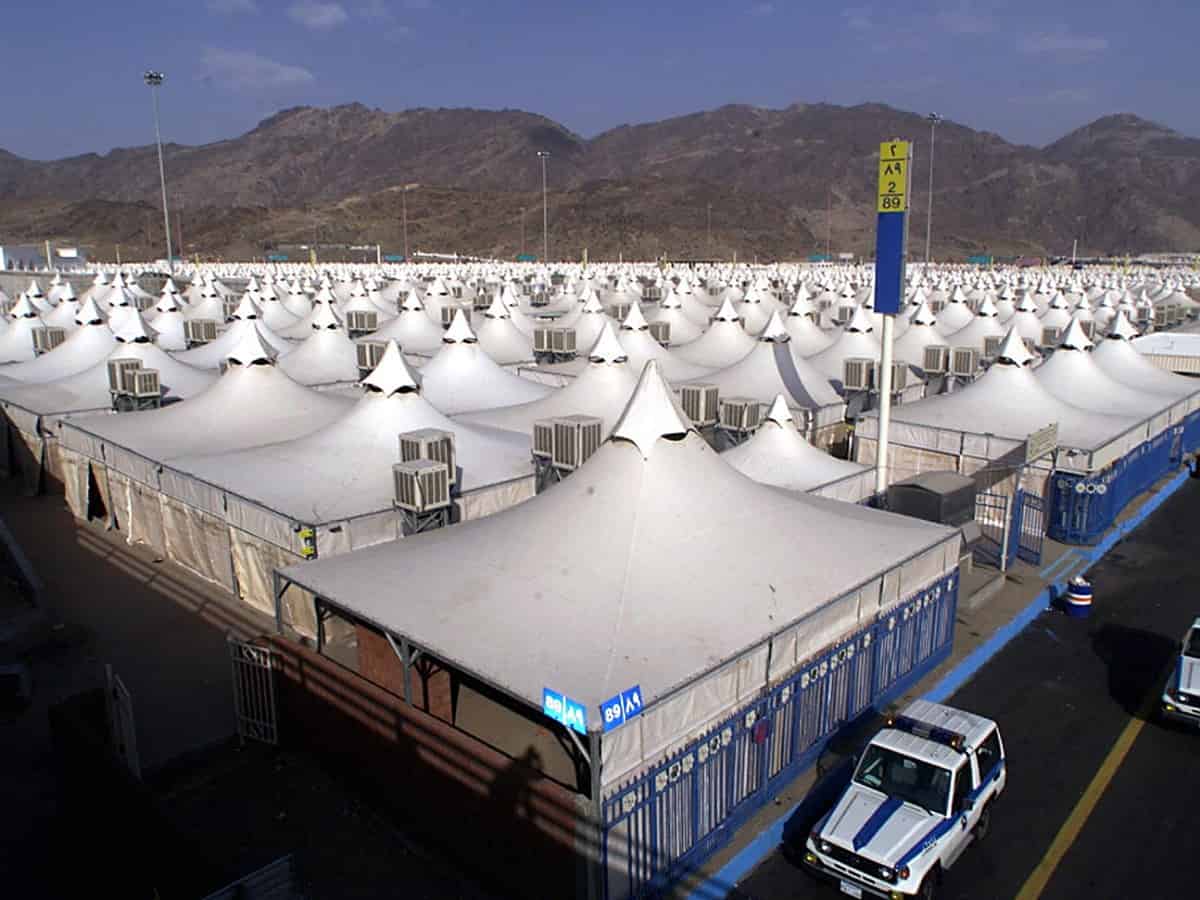
Riyadh: Ahead of upcoming Haj season, Mina, known as the ‘city of tents’, have started to be prepared with all the equipment to receive pilgrims.
This year, the Haj is expected to start on June 26 and will take place without COVID-19 restrictions, allowing a large number of pilgrims to participate.
Mustafa Hadi, chief supervisor of one of the companies in Mina told Al-Arabiya that preliminary work is being done for Mina tents, including maintenance of electricity and plumbing, painting and gypsum works, construction of toilets in the camp and decoration works.
In the next few days, tents will be prepared with restaurants, beds, blankets and other necessary arrangements to receive the pilgrims.
City of tents
Mina is located within the boundaries of the holy sites between Makkah and Muzdalifah, 7 kilometers from the Grand Mosque.
The Mina valley is a vast open area with more than 100,000 air-conditioned tents that can hold more than 2.6 million people and covers an area of more than 2.5 million square metres.
Mina is known for hosting pilgrims every year. Pilgrims stay in Mina for two nights during the month of Dhul-Hijjah while performing the rituals of Haj.
Mina is known as the largest tent city in the world. Pilgrims must remain in Mina during the Haj and perform the stoning of the devil at the Jamarat. The ritual is performed between sunrise and sunset on the last days of the pilgrimage.
The development of Mina tents over time
In 1900’s, pilgrimages in Mina used to frequently experience tent fires. Despite all-out efforts to prevent it, several pilgrims have lost their possessions and hundreds of people have been injured or killed in fires over the years.
Following these catastrophes, Teflon-coated fibreglass textiles that are resistant to high heat and ignition and stop the emission of poisonous gases were developed as flame-retardant tents in 1997.
Before the 1900s, Haj pilgrims brought and pitched their own tents and bedding and dismantled them on their return.


The new air-conditioned tents help pilgrims stay cool during the summer. They have electrical outlets, cell phone chargers, and other electronics. Clusters of tents connected by lanes, with signs in different languages directing people to emergency exits, and surrounded by metal fences for security.
The common areas, restrooms, and bathrooms are shared by pilgrims. Throughout their stay, they enjoy free access to freezers and refrigerators at receptions that are stocked with cold water, snacks, and ice-cold beverages.
Sprinklers were installed throughout the tents to disperse the water when sensing heat, with an alarm system alerting pilgrims and security staff if there was any danger.
In case of fire, 200,000 cubic meter capacity water reservoirs will be stored in Mina valley.



